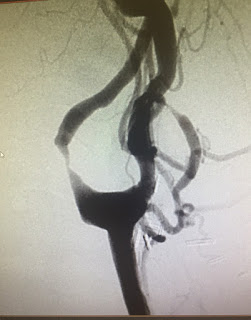After undergoing a laryngectomy, I received invaluable advice from a seasoned laryngectomee: before engaging in conversation, always start with a smile. He emphasized that this simple gesture has been instrumental in fostering a positive and approachable demeanor, particularly given the challenges of being understood with his altered voice. This was an invaluable advice that I learned to appreciate time and again.
The human smile is a universal language, transcending barriers of culture, language, and circumstance. Its power lies not only in its ability to convey happiness but also in its capacity to heal, comfort, and connect. For laryngectomees, individuals who have undergone surgery to remove their voice box due to cancer or other medical conditions, the simple act of smiling takes on profound significance, serving as a beacon of hope and resilience in the face of adversity.
Laryngectomy is a life-altering procedure that not only robs individuals of their voice but also challenges their sense of identity and communication. The loss of speech can lead to feelings of isolation, frustration, and diminished self-esteem. However, amidst the silence, the smile emerges as a powerful tool for communication and emotional expression.
A smile is more than just the movement of facial muscles; it is a reflection of the inner strength and resilience of the human spirit. For laryngectomees, whose voices may be silenced, the smile becomes their voice, speaking volumes without uttering a single word. It conveys warmth, kindness, and positivity, transcending the limitations imposed by their condition.
Moreover, the act of smiling has been scientifically proven to have numerous physical and psychological benefits. When we smile, our brains release endorphins, neurotransmitters that promote feelings of happiness and reduce stress. This natural mood booster not only uplifts the spirits of laryngectomees but also enhances their overall well-being.
Furthermore, a smile is contagious, capable of brightening the darkest of days and fostering connections with others. For laryngectomees navigating a world where communication may be challenging, a genuine smile can break down barriers, fostering empathy, understanding, and acceptance in their interactions with others.
Beyond its individual impact, the smile of a laryngectomee serves as a beacon of hope for others facing similar challenges. It embodies resilience, courage, and optimism in the face of adversity, inspiring others to find strength in their own struggles.
In addition to its emotional and social significance, the smile plays a practical role in the rehabilitation process for laryngectomees. Speech therapists often incorporate smile exercises into therapy sessions to help improve facial muscle control and articulation, facilitating the development of alternative methods of communication such as esophageal speech or the use of assistive devices.
The power of a smile
in the lives of laryngectomees cannot be overstated. Beyond its role as a
symbol of joy and positivity, the smile serves as a lifeline, connecting
individuals to their inner resilience and to the world around them. In a
journey marked by challenges and obstacles, the simple act of smiling emerges
as a beacon of hope, lighting the path towards healing, acceptance, and
connection.
























